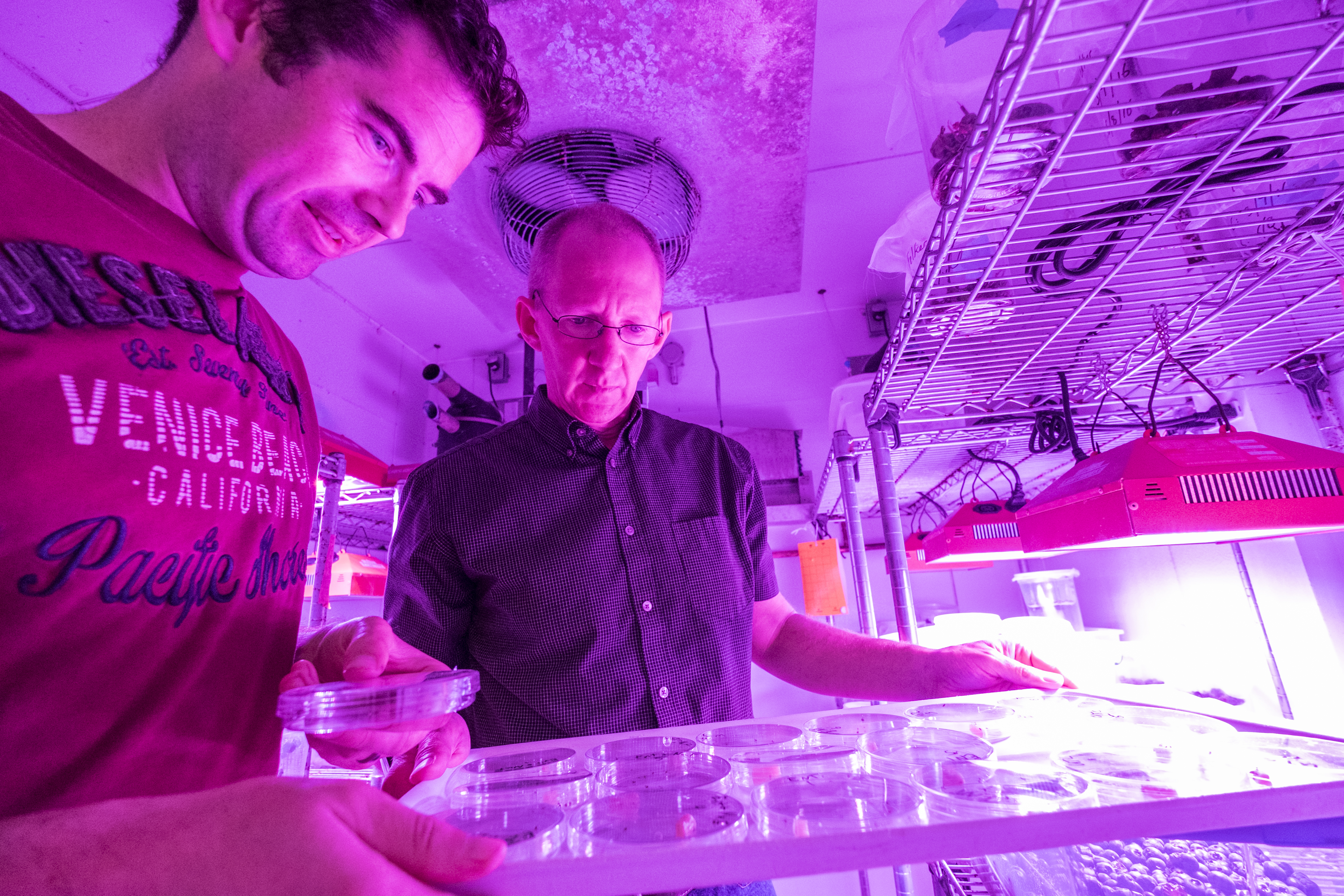Research
The Department of Entomology’s areas of research and study

MSU’s Department of Entomology has a long tradition of research excellence with internationally recognized areas of strength in insect physiology, medical entomology, integrated pest management, forest insects, pollination, systematics and landscape ecology. Emerging areas of excellence include ecosystem services, chemical ecology, insect microbe interactions and development of novel pest management technologies. The Department has annual research expenditures of about $10 million.
Our basic research programs range from molecular biology and genomics to the landscape ecology of insects and basic physiological processes. We address ecological questions about the role insects and nematodes play in aquatic and terrestrial ecosystems, how they communicate and how they interact with microbial communities.
With its applied research, the Department is a leader in developing integrated pest management (IPM) systems, which are known globally as the core approach to managing insects, nematodes and other pest organisms. MSU entomologists and nematologists have strong programs in biological control, mating disruption, attract and kill and other non-chemical tactics. They also maintain a realistic focus on pesticides including research on mode of action, efficacy, resistance, environmental fate and impact on non-target organisms.
Our specializations
Below, faculty and resources are grouped by specialization. For additional information about specific faculty member’s work, see their listings in our faculty directory.
- Food, fuel, fiber
- Natural resources and biodiversity
- Human and veterinary health
- International reach

The Department’s research arthropod collection
The Albert J. Cook Arthropod Research Collection (ARC) houses close to 1.5 million specimens mounted on pins, slides or stored in alcohol. The collection provides expert information on identification, biology, distribution and seasonal occurrence of arthropods, and makes this knowledge available to researchers in systematics, agriculture, natural resources, urban insect management, extension personnel and the general public.



 Print
Print Email
Email